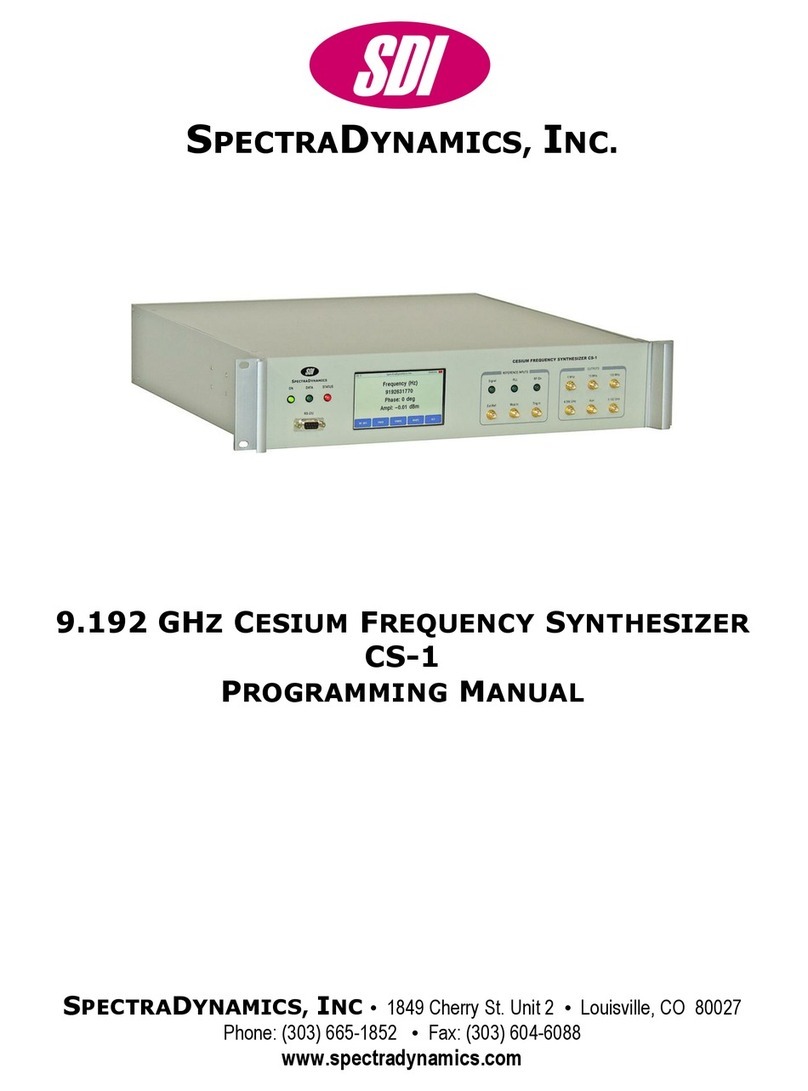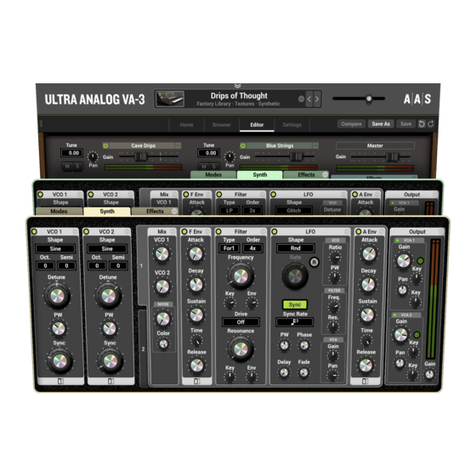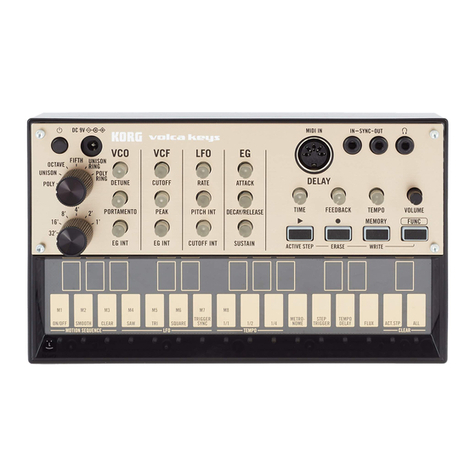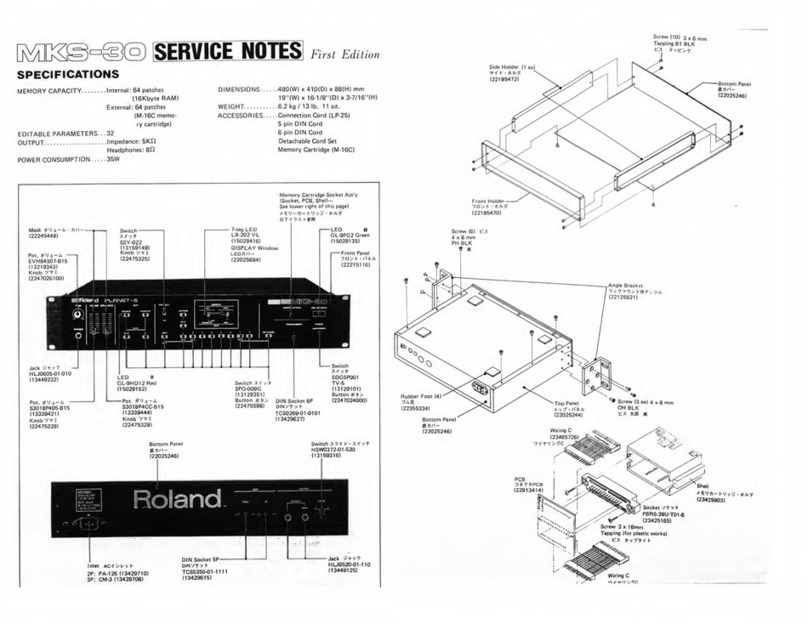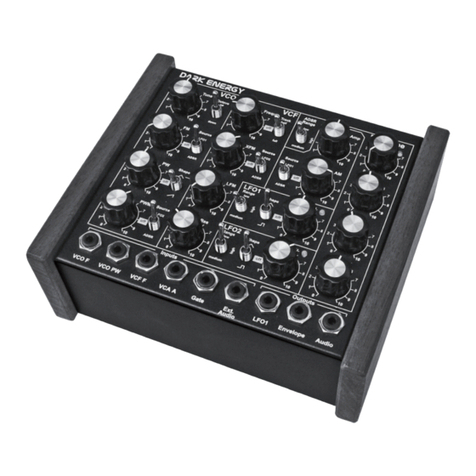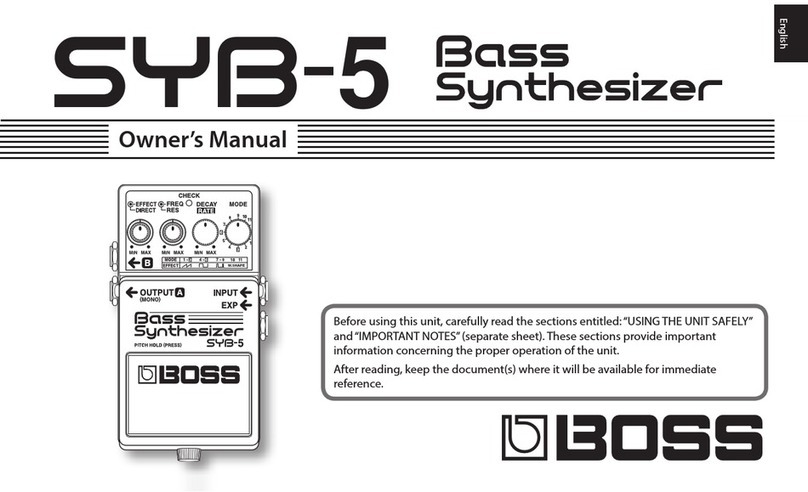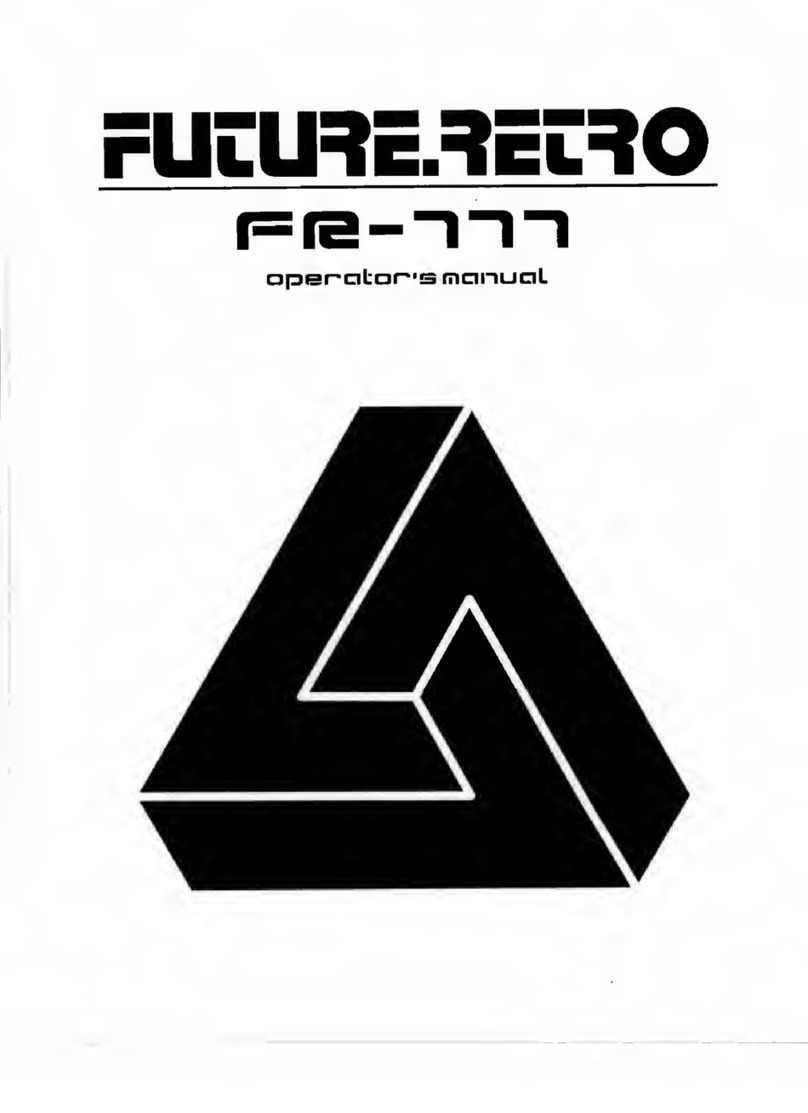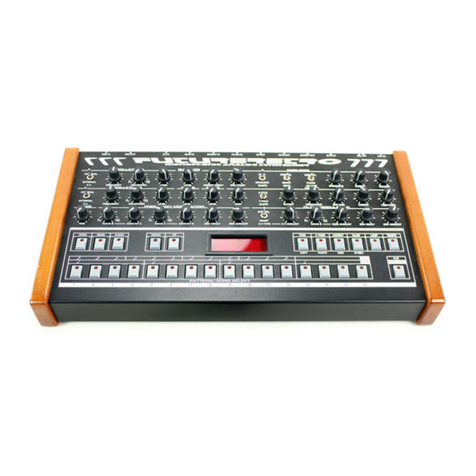SDI CS-1 User manual

SDI
SPECTRADYNAMICS, INC.
9.192 GHZCESIUM FREQUENCY SYNTHESIZER
CS-1
OPERATING MANUAL
SPECTRADYNAMICS, INC •1849 Cherry St. Unit 2 •Louisville, CO 80027
Phone: (303) 665-1852 •Fax: (303) 604-6088
www.spectradynamics.com

Copyright © SpectraDynamics, Inc. 2010
1
Description……………………………………………………………….………. 2
Safety and Preparation for Use………………………………………………… 3
DC Module...…………………………………………………………………….. 4
Synthesizer Module: Front Panel……………………………………………… 5
Synthesizer Module: Rear Panel………………………………………………. 7
CS-1 Synthesizer Module Specifications……..………………….…………. 8
RS-232 Port…………………………………………………………………….... 9
Basic Operation….…………………………………………………………..…. 10
Menu Diagram….…………………………………………………………..…… 13
Main Screen.…………………………………………………………………..... 15
Number Entry Screen…………………………………………………………… 16
Frequency Screen..…………………………………………………………..... 17
Phase Screen……..…………………………………………………………..... 18
Amplitude Screen…….……………………………………………………..…. 19
Settings Screen…………………………………………………………………. 20
Modulation Screen….………………………………………………………….. 21
Frequency Sweep Screen…………………………………………………….. 22
Frequency Shift Keying Screen……………………………………………….. 24
Phase Modulation Screen…………………………………………………….. 25
Amplitude Modulation Screen……………………………………………….. 26
State Machine Trigger Screen………………………………….…………….. 27
Instrument Screen……………………………………………………………… 29
Communication Screen……………………………………………………….. 30
Time Screen…………………………………………………………………….. 31
PLL Screen…………………….……………………………………………….. 32
Warranty……...………………………………….……………………………….. 34
Table of Contents
SDI


Copyright © SpectraDynamics, Inc. 2010
2
The 9.192 GHz Synthesizer CS-1 is made up of two separate units: the Synthesizer
Module and the DC Module.
The Synthesizer Module is a high stability and high resolution signal source designed to
be used in the implementation of a Cesium atomic clock. The unit is provided in a 2U,
19 inch rack-mount enclosure. All synthesizer functions are accessed from the front
panel or a RS232 interface. An external trigger input may be used to synchronize
programmable events such as frequency sweeps, phase modulation and amplitude
modulation with external events.
The synthesizer is implemented with a flexible modular topology. Two ultra-low noise
quartz oscillators are part of the multiplication chain from 5 MHz to 100 MHz. Buffered
outputs are provided at the front panel for 5 MHz, 10 MHz and 100 MHz. The 100 MHz
signal is the highest frequency in the low frequency section of the synthesizer. This 100
MHz signal is distributed using a 1 input, four output isolation amplifier. One of these
100 MHz signal is used as the reference for a 9.2 GHz DRO. The output of the 9.2 GHz
DRO is buffered and used to drive the LO port of a single-sideband mixer. The second
100 MHz signal is used to clock a DDS synthesizer module. The DDS synthesizer
generates a 7.xx MHz signal with 48 bit resolution and complete modulation
capabilities. The DDS synthesizer output drives the IF port of the single-sideband mixer.
The lower sideband of the mixer is selected as the output generating the 9.192 GHz
output signal. The amplitude of the 9.192 GHz output is controlled with 12 bits of
resolution and an internal relay may be used to turn off the RF signal.
The DC Module, also in a 2U, 19-inch rack-mount enclosure, provides the DC power to
the Synthesizer Module through DC cable.
Description
SDI
SPECTRADYNAMICS,INC •1849 Cherry St. Unit 2 •Louisville, CO 80027 •Phone: (303) 665-1852 •Fax: (303) 604-6088
www.spectradynamics.com
Se habla español

Copyright © SpectraDynamics, Inc. 2010
3
CAUTION!
Voltages capable of causing injury or death are present in this instrument. Use extreme
caution whenever the instrument cover is removed.
Line Voltage
This DC Module for this instrument can be setup to operate on 110-120 or 220-240
VAC and a line frequency of 50 to 60 Hz. The setup voltage for this DC Module is
specified on page 4. For conversion to a different line voltage please contact SDI.
Fuse
A 2.0 Ampere 250V slow-blow fuse is used for 100-120 VAC operation
A 1.0 Ampere 250V slow-blow fuse is used for 220-240 VAC operation.
Only replace fuses with the same type and specifications.
Line Cord
The CS-1 DC Module has a detachable, three wire power cord for connection to a
grounded power source. The enclosure of the unit is directly connected to the outlet
ground to protect against electrical shock. Always use an outlet with a protective
ground and do not disable this safety mechanism.
Service
Do not attempt to service or adjust the instrument unless another person, capable of
providing first aid or resuscitation, is present.
Operation
To operate the CS-1 unit, locate the AC power entry connector on the rear panel of the
CS-1 DC Module and connect the AC power cable. When power is applied to the CS-1
DC Module, LEDs located on the front panel, labeled “ON”, should light up. Make sure
that the CS-1 Synthesizer Module has the STANDBY switch in OFF position.
Using the DC cables provided, connect the DC connectors located on the rear panel of
the DC Module to the DC connectors located on the rear panel of the CS-1 Synthesizer
Module. Once all AC and DC cables are connected you can put the STANDBY switch in
the ON position.
Safety and Preparation for Use
SDI

Copyright © SpectraDynamics, Inc. 2010
4
FRONT PANEL
5V, 12V, 15V, 24V The LEDs are on when power is applied to the unit and the unit is
operating properly.
REAR PANEL
AC POWER ENTRY MODULE
The CS-1 DC Module is configured to operate on:
100-120 VAC
220-240 VAC
DC OUTPUTS Connectors for the DC power to be supplied to the Synthesizer
Module
ENCLOSURE Size: 3U X 19” X 16”Weight: 22 lbs
DC Module
SDI

Copyright © SpectraDynamics, Inc. 2010
5
ON The LED is on, when power is applied to unit and the unit is operating
properly.
DATA The LED is on when data is being sent or received via the RS-232 port.
STATUS This LED is a hardware representation of the system status flag. The
LED is turned on when an error has occurred. The LED will stay ON even
if the error condition has been automatically corrected for or is no longer
present. The user must go to the PLL Status Menu to clear the status flag
with the soft key CLR.
RS-232 DB-9 connector for serial communications. This is a dumb terminal
RS-232 port. A null modem adapter is not required.
DISPLAY The LCD display and touch screen is used to control the CS-1 in local
control mode.
REFERENCE INPUTS
Signal The Signal LED will turn on when the external reference is present at the
Ext Ref port.
PLL The PLL LED will turn on when the CS-1 internal PLLs are operating
properly.
Ext Ref SMA input for the 5 MHz external reference signal (+/-0.1 Hz, level +7 to
+15 dBm. This input port has an impedance of 50 ohms when an external
reference is provided and an impedance of 10 kOhm when routed to the
tuning port of the internal 5 MHz crystal. (See Alternative Reference
Configurations p.11)
Mod In SMA input for the external modulation signal.
Trig In SMA input for the state machine trigger signal.
RF On The RF On LED will turn on when the 9.192 GHz output signal is
activated.
SDI
Synthesizer Module: Front Panel

Copyright © SpectraDynamics, Inc. 2010
6
OUTPUTS
5 MHz SMA output providing a buffered copy of the 5 MHz reference signal. This
output signal has a level of +15 dBm ± 1 dB.
10 MHz SMA output providing a buffered copy of the 5 MHz reference signal
multiplied by 2. This output signal has a level of +14 dBm ± 1 dB.
100 MHz SMA output providing a buffered copy of the internally generated 100 MHz
signal. This output signal has a level of +14 dBm ± 1 dB.
7 MHz SMA output providing a buffered copy of the internal DDS (Direct Digital
Synthesizer) output, phase locked to the 100 MHz reference signal. This
output signal has a level of -12 dBm ± 1 dB.
9.2 GHz SMA output providing a buffered copy of the internal DRO (Dielectric
Resonator Oscillator) output, phase locked to the reference signal. This
output signal has a level of +2 dBm ± 1 dB.
9.192 GHz SMA buffered output providing the frequency/phase modulated 9.192 GHz
signal, phase locked to the reference signal. This output signal has a level
between -10 dBm and +15 dBm and the default value is 0 dBm. An
internal relay is used to turn off the RF signal.
SDI
Synthesizer Module: Front Panel

Copyright © SpectraDynamics, Inc. 2010
7
DC INPUT Connectors for the DC power provided to the Synthesizer Module by the
DC Module.
STANDBY Standby Switch turns off the synthesizer but keeps all oscillators powered
on.
SDI
Synthesizer Module: Rear Panel

Copyright © SpectraDynamics, Inc. 2010
8
PARAMETER
CONDITIONS
TYP
UNITS
Frequency Stability y( )
Ref. 5 MHz, +13 dBm
Pair measurement
Averaging time
1 s
10 s
100 s
1000 s
100000 s
1000000 s
1·10-13
1·10-14
1·10-15
2·10-16
2·10-17
2·10-17
-
Phase Noise L(f) *
Carrier 9.192 GHz
Pair measurement (locked 6Hz BW)
Offset frequency
1 Hz
10 Hz
100 Hz
1 kHz
-69
-80
-93
-107
dBc/Hz
Phase Noise L(f)
Carrier 100 MHz
Offset frequency
10 Hz
100 Hz
1 kHz
>10 kHz
-120
-133
-155
-175
dBc/Hz
Phase Noise L(f)
Carrier 10 MHz
Offset frequency
1 Hz
10 Hz
100Hz
>1 kHz
-114
-142
-160
-168
dBc/Hz
Phase Noise L(f)
Carrier 5 MHz
Offset frequency
1 Hz
10 Hz
100Hz
>1 kHz
-118
-150
-167
-173
dBc/Hz
Temperature coefficient @ 9.192 GHz
0.5
ps/K
*Note: The PM Noise at 1 Hz for Carrier 9.192 GHz Pair measurement (locked 0.5Hz BW) -49dBc/Hz.
External Reference 5.0 MHz ± 2.0·10-8 +7 dBm to +15 dBm
Rack-mount Enclosure
Size: 3U” X 19” X 16”
Weight: 20 lbs
SDI
CS-1 Synthesizer Module Specifications

Copyright © SpectraDynamics, Inc. 2010
9
RS-232 Communication Port
The CS-1 Synthesizer Module functions are accessed through the RS-232 port located
on the front panel. A standard serial cable with a DB-9 connector can be used to
interface to the unit. The user can input commands using a simple dumb terminal
program on a remote computer or more sophisticated control can be used with software
such as Labview.
On the front panel above the RS-232 connector the LED labeled DATA will light up
when data is being received or sent on the RS-232 port and can be used to verify that
the unit is communicating.
Port Settings
On power-up the RS-232 port settings are:
Baud rate 9600 8 Bits 1 Stop Bit No Parity.
Hardware handshaking is not used. The DB-9 connector pin-out is described below.
Pin Function
1 NC
2 Data out
3 Data in
4 NC
5 GND
6 NC
7 NC
8 NC
9 NC
RS-232 Port
SDI

Copyright © SpectraDynamics, Inc. 2010
10
Upon connection of the DC Module to the AC power outlet and the DC connectors on
the Rear Panel of both Modules, the Synthesizer Module has the ON LED lit up
indicating that CS-1 is turned on.
The DATA LED is turned off indicating that the unit is not communicating through the
RS-232 port and it is ready to receive commands from the LCD touch screen on the
front panel.
The STATUS LED is turned on during the time necessary to warm-up the internal
crystal oscillators. The crystal may take up to 2 hours to warm up and up to 24 hours to
stabilize. Check the PLL Status Screen to know when the oscillators have warmed up
and all internal loops are locked.
Reference Configuration
Upon power-up, the machine is set to work in its Internal Reference configuration that is
using its internal 5 MHz crystal oscillator as the reference signal.
To set the CS-1 to work in External Reference configuration use the following
sequence:
SET INST PLL EXT
then apply to the Ext Ref port a 5 MHz signal with power level between +10 and
+15 dBm. Both PLLs will be properly locked as indicated by the illuminated PLL LED.
Press the soft key EXIT three times to return to the Main Menu.
It is possible to use CS-1 in its Internal Reference configuration. To do so, go to the
PLL Menu and select INT. The Ext Ref port is then routed to the tuning port of the
internal low-noise 5 MHz reference crystal, which is now the main reference for the
synthesizer. The Ext Ref port is DC coupled and has 10 kOhm impedance. The crystal
has a tuning coefficient of 0.3 ± 0.1 Hz/V that allows the steering of the crystal
frequency over a bandwidth of +/- 2.5 Hz. The PLL LED will be turned on indicating the
use of the internal PLL operating at 100 MHz.
Menu: PLL Status
Basic Operation
SDI

Copyright © SpectraDynamics, Inc. 2010
11
Output
Upon power up, the internal relay at the 9.192 GHz output port is in the OFF position
and the RF ON LED is turned off.
To turn the RF output on, press the soft key RFOFF in the Main Screen. When the RF
is turned on, the signal level at the 9.192 GHz port is 0 dBm with a preset frequency of
9.192631770 GHz. The 9.2 GHz port has a signal with level +2 dBm ± 1 dB. The
7 MHz port has a signal with preset frequency 7.368230 MHz and level -12 dBm ± 1dB.
Menu: MAIN
Frequency Control
The carrier frequency of the 9.192GHz output signal is controllable using the LCD touch
screen on the front panel or through the RS-232 Communication Port. The frequency
can range from 9.189631770 GHz to 9.195631770 GHz (±3 MHz with respect to the
preset value) with a resolution of 10-6 Hz.
Menu: FREQ
Amplitude control
The signal amplitude at the 9.192 GHz port is controllable through the RS-232
Communication Port or using the LCD touch screen on the front panel. The amplitude
can range from -10 dBm to +15 dBm with a resolution of 0.1 dB.
Menu: AMPL
Signal Modulation
Four types of signal modulation are available to the user. The first one is linear
Frequency Modulation (FM) and allows to sweep the RF carrier frequency between two
values (F1 and F2) chosen by the user.
Basic Operation
SDI

Copyright © SpectraDynamics, Inc. 2010
12
The second one is Frequency Shift Keying (FSK) Modulation and allows sideline
interrogation of the Cesium resonance. The modulation is obtained by alternating
between two frequency values (F1 and F2) for the 9.192 GHz output signal. The two
frequency values can range from 9.189631770 GHz to 9.195631770 GHz (±3 MHz with
respect to the preset value) with a resolution of 10-6 Hz.
The third possibility is Phase Shift Keying (PSK) Modulation obtained by alternating
between two specified amounts of phase (PHS1 and PHS2) of the 9.192 GHz output
signal. The phase amounts can range between 0 and 360 degrees with resolution
0.022 degrees.
The last one is Amplitude Shift Keying Modulation (ASK), obtained by turning on and off
the amplitude of the 9.192 GHz output signal. The time used by the RF signal to go
from on to off (and vice versa) can range from 164 10-6 (square-wave) to 10485 10-6.
The modulation parameters can be programmed through the RS-232 or entered using
the front panel LCD touch screen.
Menu: MOD
The Trigger Menu offers the possibility of synchronizing the modulation events with an
external trigger provided at the Trigger In Port, setting the CS-1 to operate as a state
machine. The operation as a state machine includes up to 10 states, each one
incremented on every rising edge of the hardware trigger. When the state number 10 is
reached the next hardware trigger resets the machine to state 1 and the cycle can
continue indefinitely. The number of states or events in a sequence is programmed to
be 1 through 10. Each state is defined by four parameters: frequency, phase, amplitude
of the 9.192 GHz signal and the state of the RF relay (on or off).
Note:it is not recommended to switch the RF relay with every trigger event because will
significantly limit the RF relay lifetime, which is specified by a finite number of switching
cycles. MTBF typically 5 million cycles.
Menu: TRIG
The Trigger Menu and the Modulation Menu are mutually exclusive: when the
modulation parameters are entered using one of them, then the other is automatically
ignored.
Basic Operation
SDI

Copyright © SpectraDynamics, Inc. 2010
13
Menu Diagram
SDI

Copyright © SpectraDynamics, Inc. 2010
14
Menu Diagram
SDI

Copyright © SpectraDynamics, Inc. 2010
15
Main Screen The main screen displays the current frequency and phase and
amplitude of the CS-1 Synthesizer. The soft keys at the bottom of the screen
display the five main functions that are available.
DISPLAYS
Frequency Frequency of the 9.1926xx GHz output carrier expressed in Hz.
Phase Amount of phase added by the user to the 9.1926xx GHz output
carrier, expressed in degrees (deg). 360 is equal to 0.
Amplitude Amplitude of the 9.1926xx GHz output carrier expressed in dBm.
MENU
RF ON/OFF Turns ON the 9.1926xx GHz output port by use of an internal relay
controlled by the internal processor.
FREQ Allows changing of the carrier frequency. The FREQ soft key will
bring up the Frequency Menu.
PHASE Allows changing the phase of the RF carrier signal. The PHASE
soft key will bring up the Phase Menu.
AMPL Allows changing of the carrier RF amplitude. The AMPL soft key
will bring up the Amplitude Menu.
SET Allows access to the instrument settings. The SET soft key will
bring up the Settings Menu.
SDI
Main Screen

Copyright © SpectraDynamics, Inc. 2010
16
Number Screen The number entry screen is used to make numeric entries.
DISPLAYS
The current setting will be displayed across the top of the screen. The new entry
is displayed in a number entry box.
SPECIAL KEYS
Hz Enter number in Hertz.
kHz Enter number in kiloHertz.
MHz Enter number in MegaHertz.
deg Enter number in degrees.
dBm Enter number in dBm.
Vrms Enter number in Volts RMS.
Vpp Enter number in Volts peak-to-peak.
BK Backspace.
ENTER Enter new number and exit number menu.
ESC Exit number menu discarding changes.
0-9 Numbers zero through nine.
.Decimal point.
- Negative sign.
SDI
Number Entry Screen

Copyright © SpectraDynamics, Inc. 2010
17
Frequency Screen The frequency screen allows the changing of the 9.192 GHz
carrier frequency using the soft keys at the bottom of the screen as described
below.
DISPLAYS
Frequency Current frequency of the 9.1926xx GHz output carrier expressed in
Hz.
MENU
SET Allows entering the new carrier frequency using the Frequency
Entry Menu. The preset value is 9.192631770 GHz. The new
frequency can be specified in Hz, kHz or MHz and can range from
9.189631770 GHz to 9.195631770 GHz (±3 MHz with respect to
the preset value). The frequency resolution is 10-6 Hz.
STEP Allows entering the frequency step size (in Hz, kHz or MHz) using
the Frequency Entry Menu. The maximum frequency step size is
6 MHz and the frequency step resolution is 10-6 Hz.
UP Increases the carrier frequency by the frequency step size.
DOWN Decreases the carrier frequency by the frequency step size.
EXIT Exit to previous menu
Frequency Screen
SDI

Copyright © SpectraDynamics, Inc. 2010
18
Phase Screen The phase screen allows the changing of the 9.192 GHz carrier
phase using the soft keys at the bottom of the screen as described below.
DISPLAYS
Phase Current phase added to the 9.1926xx GHz output carrier,
expressed in degrees (deg).
MENU
SET Allows entering the phase to be added to the 9.1926xx GHz signal
using the Phase Entry Menu. The new phase is specified in
degrees (deg) and must be with the interval -360 deg to 360 deg.
The phase resolution is 0.022 deg.
STEP Allows entering the phase step size (in degrees) using the Phase
Entry Menu. The maximum step size is 360 deg. The phase step
resolution is 0.022 deg.
UP Increases the carrier phase by the phase step size.
DOWN Decreases the carrier phase by the phase step size.
EXIT Exit to previous menu
Phase Screen
SDI
Other manuals for CS-1
1
Table of contents
Other SDI Synthesizer manuals
Popular Synthesizer manuals by other brands
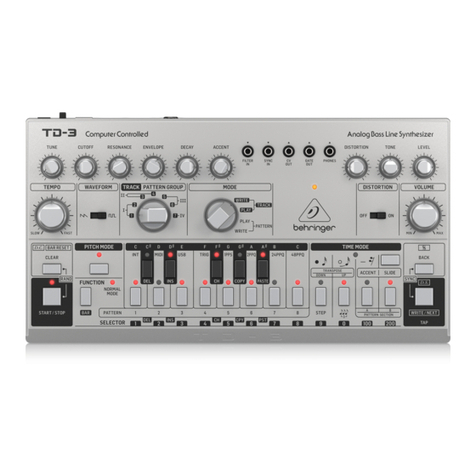
Behringer
Behringer TD-3 quick start guide
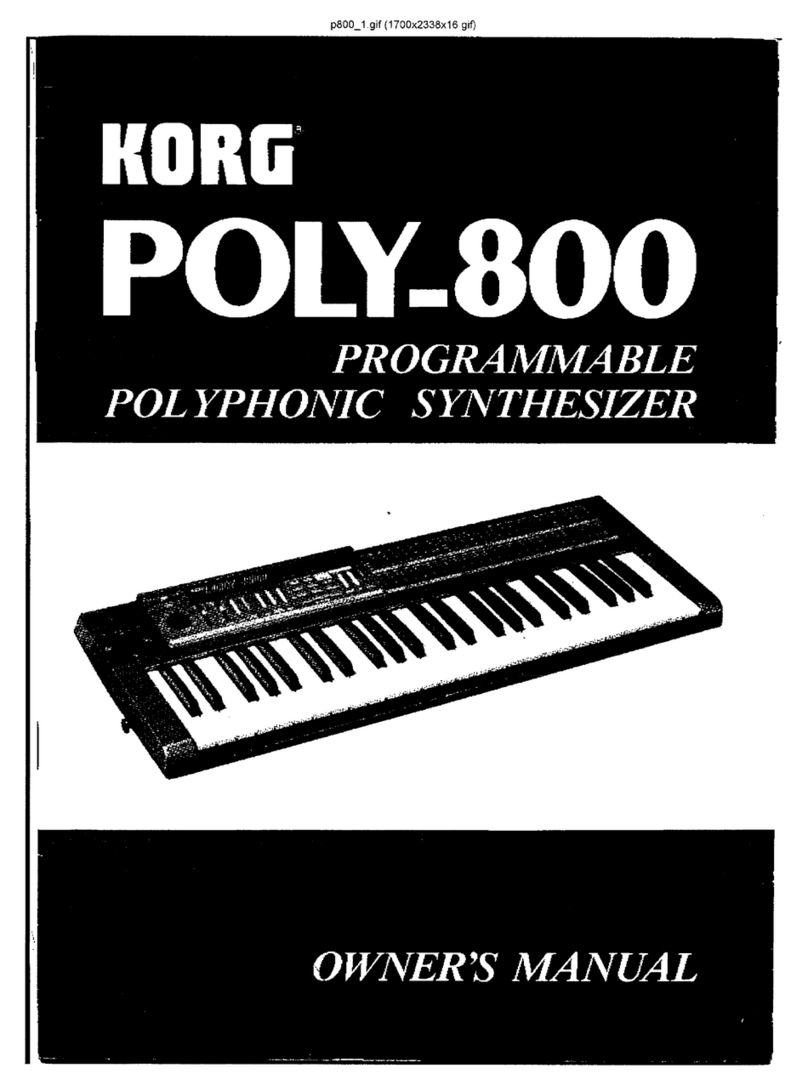
Korg
Korg Poly-800 owner's manual
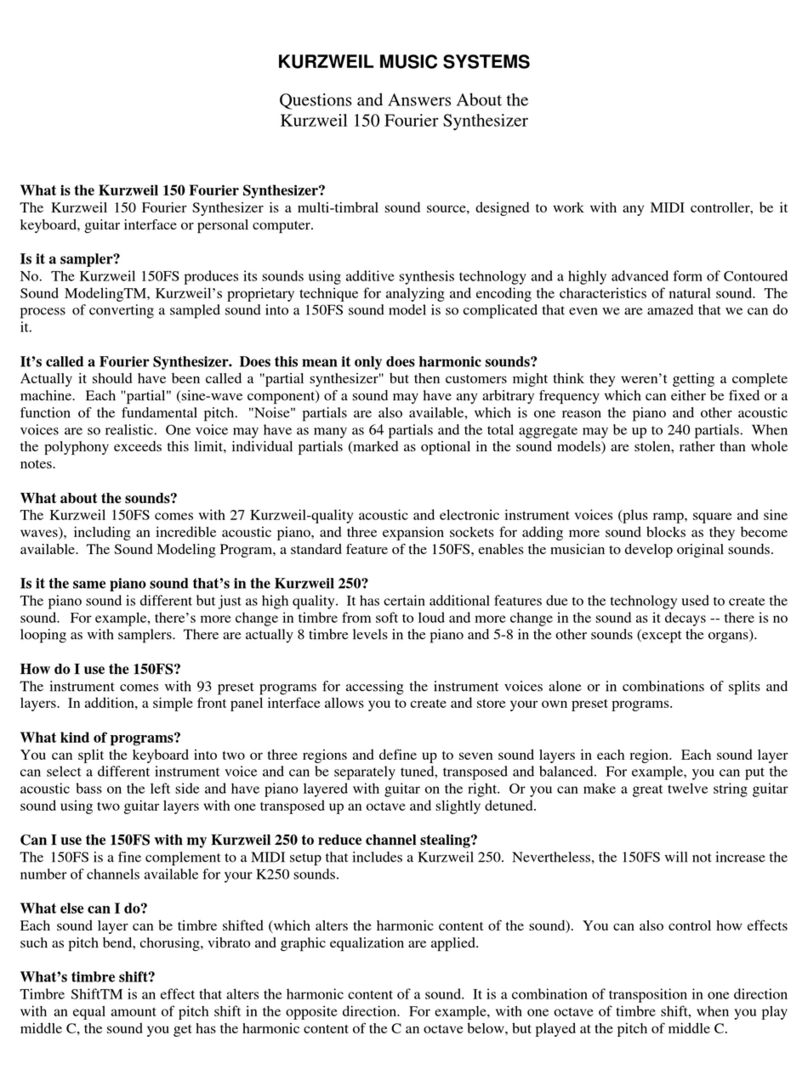
Kurzweil
Kurzweil ENSEMBLE GRANDE MARK 150 Faq manual
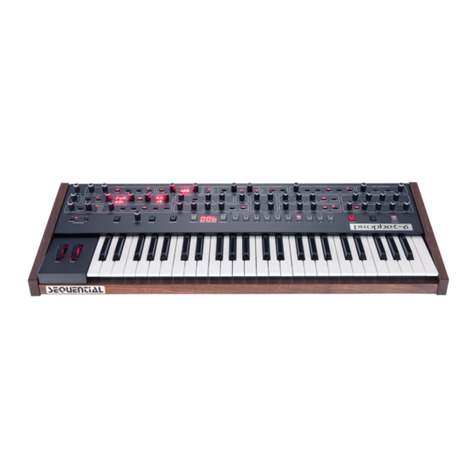
Dave Smith Instruments
Dave Smith Instruments Sequential PROPHET 6 Operation manual
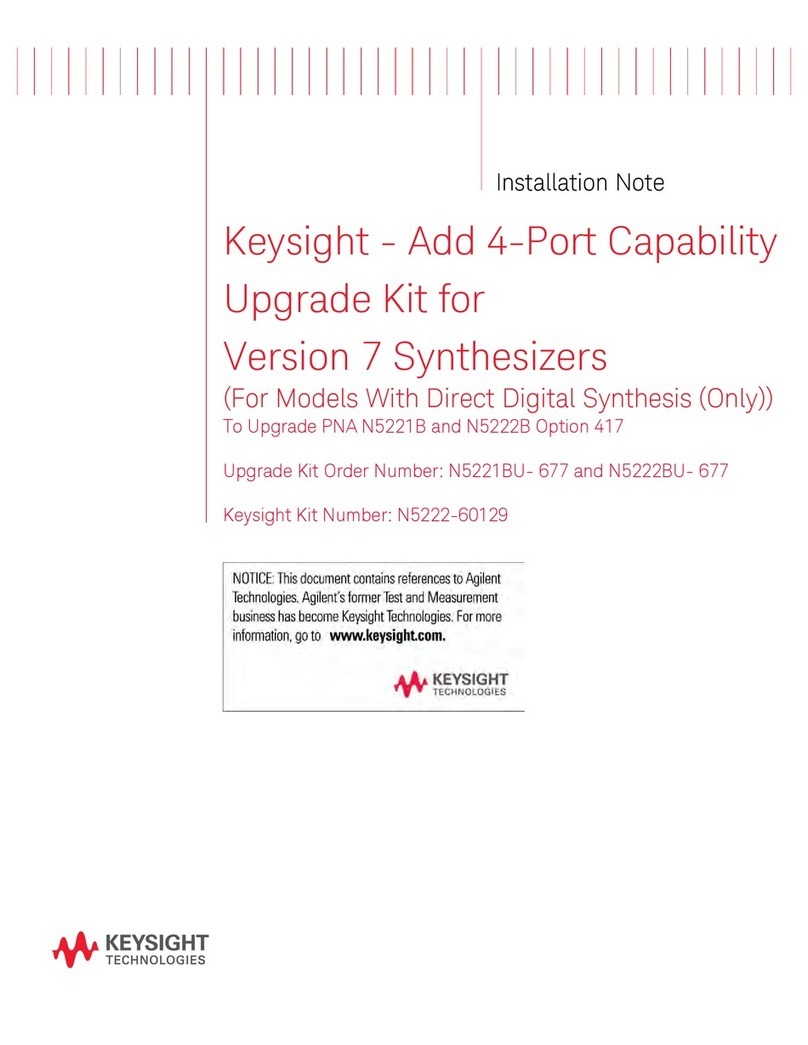
Keysight
Keysight N5221BU-677 Installation note

teenage engineering
teenage engineering OP-Z1 user guide
